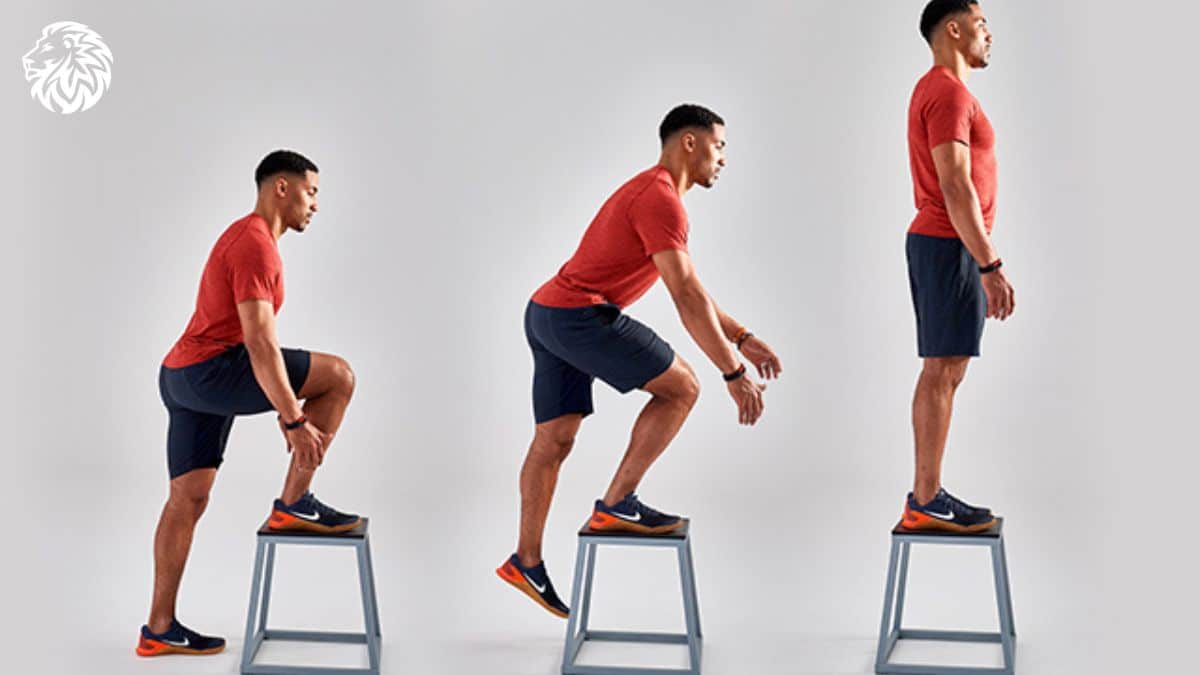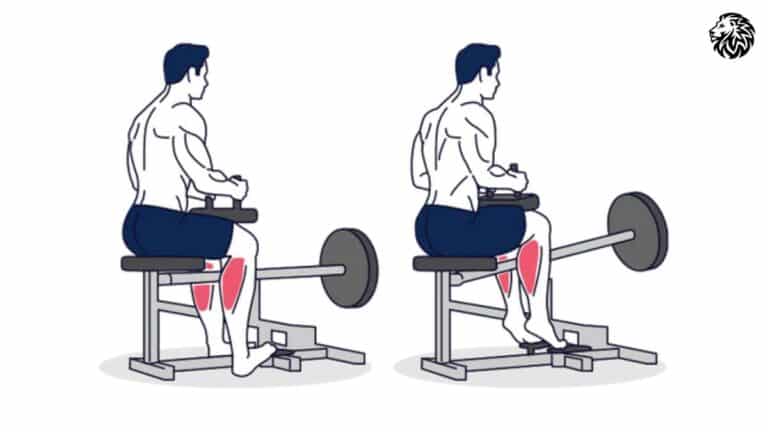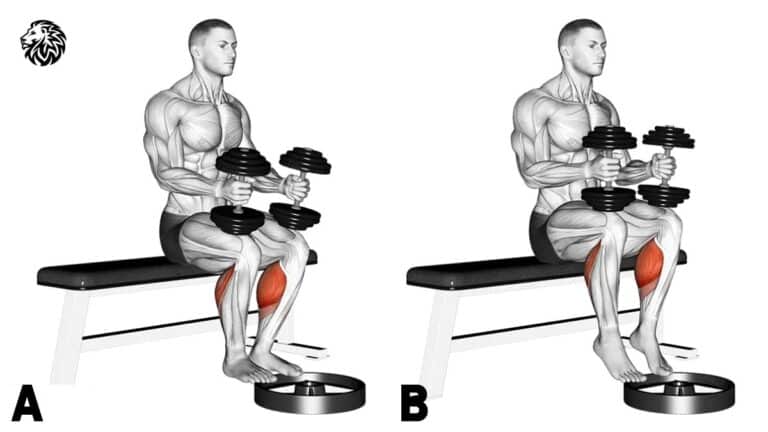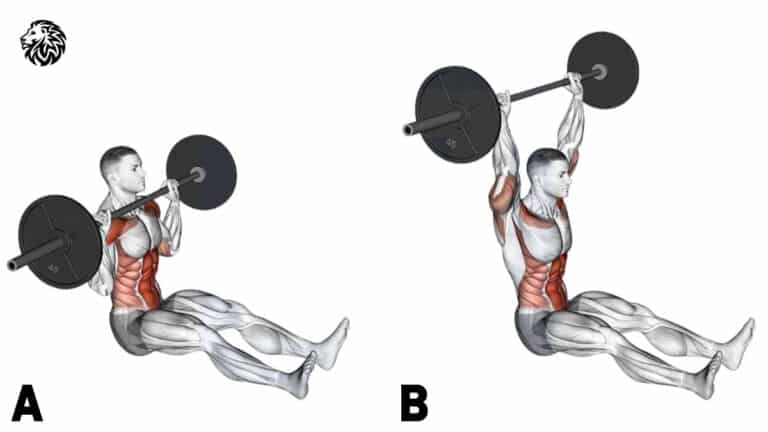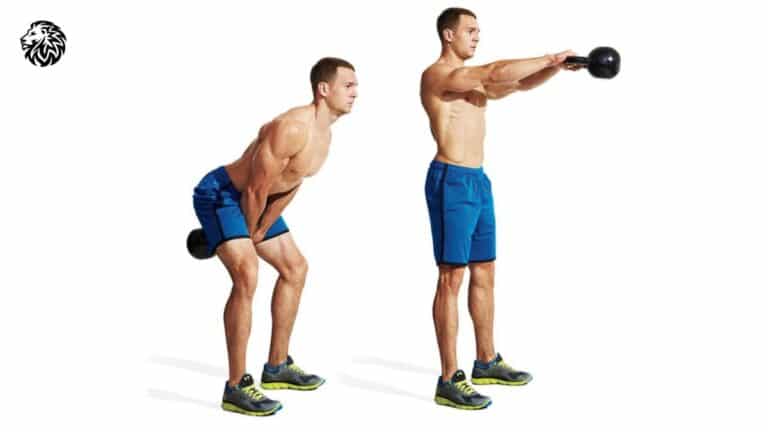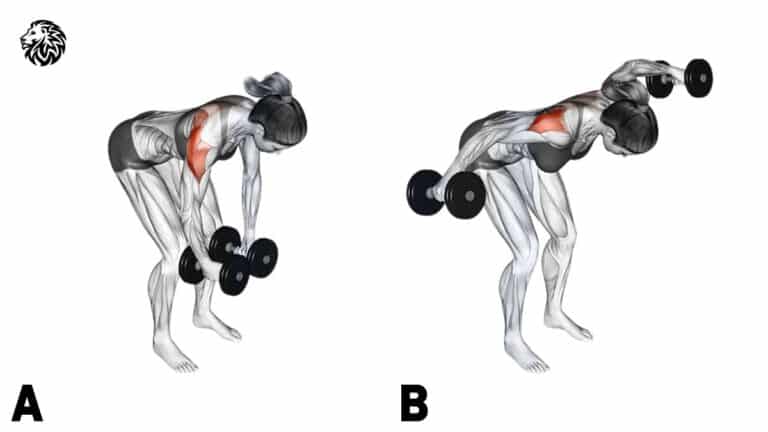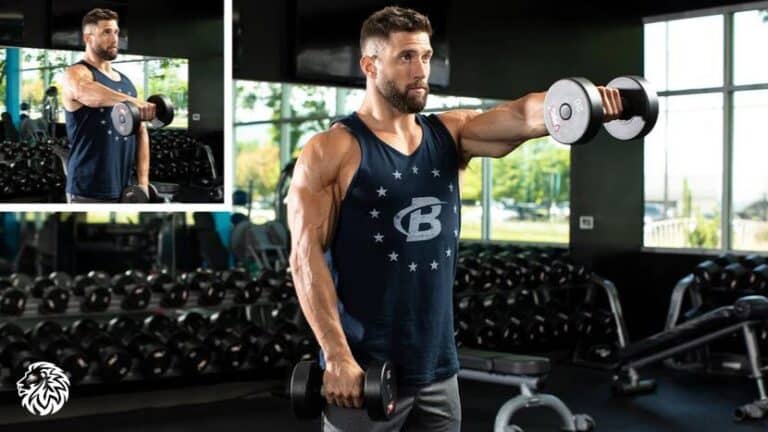Step-ups are a simple but effective lower-body exercise that builds strength, balance, and endurance. This movement mimics real-life activities like climbing stairs and stepping onto elevated surfaces. It targets key muscles in the legs and core, making it a valuable addition to any workout routine. Whether you want to improve athletic performance, enhance daily mobility, or build lower-body strength, step-ups offer a versatile and effective way to train.
Exercise Instructions
- Choose a sturdy platform – Use a bench, step, or box that is about knee height. Adjust the height based on your fitness level.
- Stand with feet hip-width apart – Position yourself about a step away from the platform.
- Step onto the platform – Place your right foot firmly on the surface, ensuring your entire foot is on the step.
- Push through your heel – Engage your quadriceps and glutes as you lift your body up.
- Bring your left foot up – Step fully onto the platform so both feet are together.
- Step down with control – Lower your left foot back to the ground first, followed by your right foot.
- Repeat on the opposite leg – Alternate legs or complete all reps on one side before switching.
Muscles Targeted
Step-ups primarily engage the quadriceps, hamstrings, and glutes, making them an excellent exercise for building lower-body strength. The quadriceps, located in the front of the thigh, work to extend the knee as you push yourself up. The hamstrings, on the back of the thigh, help control the movement when lowering back down. The gluteus maximus, medius, and minimus play a crucial role in hip extension and stabilization. Additionally, step-ups activate the calves for ankle stability and the core muscles, including the abdominals and obliques, to maintain balance and posture throughout the movement.
Why Step-Ups Are Important
Step-ups mimic functional movements used in everyday life, making them beneficial for mobility and injury prevention. They help athletes improve performance by enhancing explosive power and endurance. The unilateral nature of the movement means each leg works independently, correcting muscle imbalances and improving stability. Unlike machines, step-ups allow for a natural range of motion, reducing joint strain while improving muscle engagement. This exercise is also adaptable, making it useful for all fitness levels, from beginners to advanced lifters. By incorporating step-ups into your routine, you strengthen key lower-body muscles, boost coordination, and enhance overall athletic performance.
Tips and Things to Avoid
- Use a controlled movement – Avoid using momentum or swinging your legs, as this reduces muscle engagement and increases injury risk.
- Keep your knee aligned – Prevent your knee from collapsing inward to reduce stress on the joint. Your knee should track over your toes throughout the movement.
- Engage your core – Maintain balance by activating your abdominal muscles, which help stabilize your body.
- Choose an appropriate height – Avoid a step that is too high, which can strain your knees and hips. A step around knee height is ideal for most people.
- Do not push off with the back foot – Let the leading leg do the work to maximize muscle activation. Pushing off with the back foot reduces effectiveness.
- Keep your entire foot on the step – Placing only your toes on the step can cause instability and increase the risk of slipping or injury.
- Maintain a straight posture – Avoid leaning too far forward or backward, as this can lead to poor form and potential strain on the lower back.
Reps and Sets for Step-Ups
| Fitness Level | Reps | Sets | Rest Between Sets |
|---|---|---|---|
| Beginner | 8-12 | 2-3 | 30-45 seconds |
| Intermediate | 12-15 | 3-4 | 30-60 seconds |
| Advanced | 15-20 | 4-5 | 45-60 seconds |
Other Exercises to Use
To complement step-ups, include other lower-body exercises that improve strength and mobility:
- Lunges – Work similar muscle groups with added balance challenges.
- Squats – Build overall leg and glute strength.
- Bulgarian split squats – Enhance single-leg strength and stability.
- Calf raises – Strengthen the lower leg for improved stepping power.
- Deadlifts – Improve posterior chain activation and overall strength.
Final Thoughts: Step-Ups
Step-ups are an effective exercise for building lower-body strength, improving balance, and enhancing mobility. This movement is practical, functional, and adaptable, making it a valuable addition to any fitness routine. By maintaining proper form and adjusting the difficulty as needed, you can maximize the benefits and prevent injuries. Incorporate step-ups regularly to support your overall fitness goals.
Frequently Asked Questions about Step-Ups
Are step-ups better than squats?
Step-ups and squats both build leg strength, but step-ups focus more on unilateral movement and balance. Squats are better for overall lower-body development, while step-ups enhance functional mobility and stability.
How high should the step be?
The ideal height is around knee level. Beginners should start with a lower step to maintain control and avoid excessive strain.
Can I use weights with step-ups?
Yes, holding dumbbells or wearing a weighted vest can increase resistance and intensity.
How often should I do step-ups?
Include step-ups in your routine 2-3 times per week, depending on your training goals.
Will step-ups help with running?
Yes, step-ups strengthen the muscles used in running, improving power and endurance while reducing injury risk.
